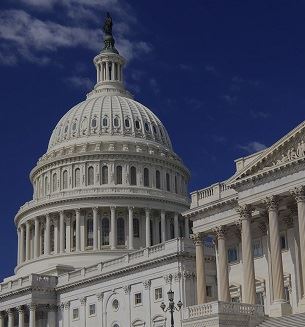Federal Crime Lawyer: Safeguarding Your Civil Liberties Versus Serious Federal Charges
Wiki Article
Demystifying the Process of Federal Appeals: What You Need to Know
Navigating the detailed world of government appeals can commonly appear like traversing uncharted waters for those not familiar with the procedure. Understanding the nuances of appellate court territory, the complexities of submitting a notification of allure, offering a compelling brief, and making an influential dental argument are important elements that can substantially influence the end result of an instance. By untangling the layers of intricacy surrounding government appeals, individuals can gain a clearer insight into the mechanisms that govern this critical point of the legal system.Understanding Federal Appeals Process
Exploring the elaborate realm of the federal charms process reveals a methodical and organized trip with the judicial system - federal antitrust appeals. Federal appeals work as an important device for evaluating decisions made by reduced courts. Understanding this procedure is important for any person included in lawful procedures at the federal levelThe procedure commonly starts with a party dissatisfied with a lower court's judgment submitting a notice of charm. This sets off a testimonial by a greater court, where a panel of judges evaluates the legal disagreements presented by both celebrations. Briefs outlining the legal reasoning behind each celebration's setting are sent, and oral disagreements might be heard to clarify complicated concerns.
The appellate court's choice is based on a comprehensive evaluation of the lower court's procedures and the debates offered. As soon as the appellate court gets to a decision, it can affirm, turn around, remand, or change the reduced court's ruling, providing clarity and finality to the lawful conflict.
Appellate Court Jurisdiction Described

Appellate courts have territory over details sorts of instances, typically those entailing legal mistakes, procedural issues, or inquiries of legislation instead of factual conflicts. The territory of appellate courts is generally described in laws and regulations that govern the court system. Comprehending appellate court jurisdiction is important for parties associated with the charms procedure as it determines whether a situation is qualified for testimonial and the level to which the appellate court can intervene in the lower court's choice.
Declaring a Notice of Allure
The preliminary action in beginning the federal allures procedure includes filing a Notification of Allure with the ideal appellate court. federal appeal lawyers in maine. This crucial paper formally notifies the court and the various other celebrations involved in the instance that the appealing celebration plans to seek a review of the lower court's choice. Submitting a Notification of Charm is a stringent step-by-step need that establishes the appellate process movingWhen preparing the Notification of Allure, it is important to ensure conformity with the certain policies and guidelines of the relevant appellate court. The file needs to normally consist of information such as the situation name, the reduced court's name, the date of the judgment being appealed, and a concise declaration indicating the grounds for the allure.
Timeliness is essential when filing a Notification of Charm. Missing out on the deadline for sending this file can result in the allure being rejected, underscoring the relevance of exact and prompt initiation of the allures process. It is advisable to look for legal guidance to browse the complexities of submitting a Notice of Allure properly.
Instruction and Oral Disagreement
In the appellate procedure, offering written briefs and engaging in dental debates play crucial duties in promoting for the appealing event's setting prior to the appellate court. Briefs are extensive legal documents that lay out the celebrations' disagreements, legal authorities, and evaluation sustaining their settings. These composed submissions provide the court with a comprehensive understanding of the realities of the instance, the relevant law, and why the appealing celebration believes the lower court's decision must be rescinded.Adhering to the entry and evaluation of the briefs, oral debates offer the events an opportunity to more clarify their positions, resolve any kind of concerns the appellate judges might have, and emphasize bottom lines from their created briefs. Dental disagreements are a chance for the lawyers to persuade the courts through verbal campaigning for and reactions to queries from the bench.

Receiving the Appellate Court Decision

Conclusion
To conclude, the federal appeals procedure is a complex however critical action in looking for justice. Recognizing the appellate court territory, filing a notice of allure, preparing briefs, and offering oral debates are all important components of this process. Ultimately, getting the appellate court decision can supply quality and resolution to legal conflicts. It is essential to browse the government allures process with persistance and attention to detail to attain a reasonable result.As we advance from recognizing the government appeals procedure to studying the complexities of appellate court jurisdiction, a fundamental element comes to light pertaining to the authority and limitations of these greater courts in the lawful landscape. Appellate court jurisdiction refers to the range of instances that a specific appellate court has the power to assess and decide upon. Unlike test courts that hear why not look here instances for the initial time, appellate courts are limited to examining decisions made by reduced courts. Understanding appellate court territory is critical for events included in the charms procedure as it figures out whether a situation is eligible for testimonial and the degree to which the appellate court can intervene in the reduced court's decision.
Whether the appellate court attests, turns around, or remands the reduced court's decision, understanding the effects of the ruling is essential for all events involved in the appellate procedure.
Report this wiki page